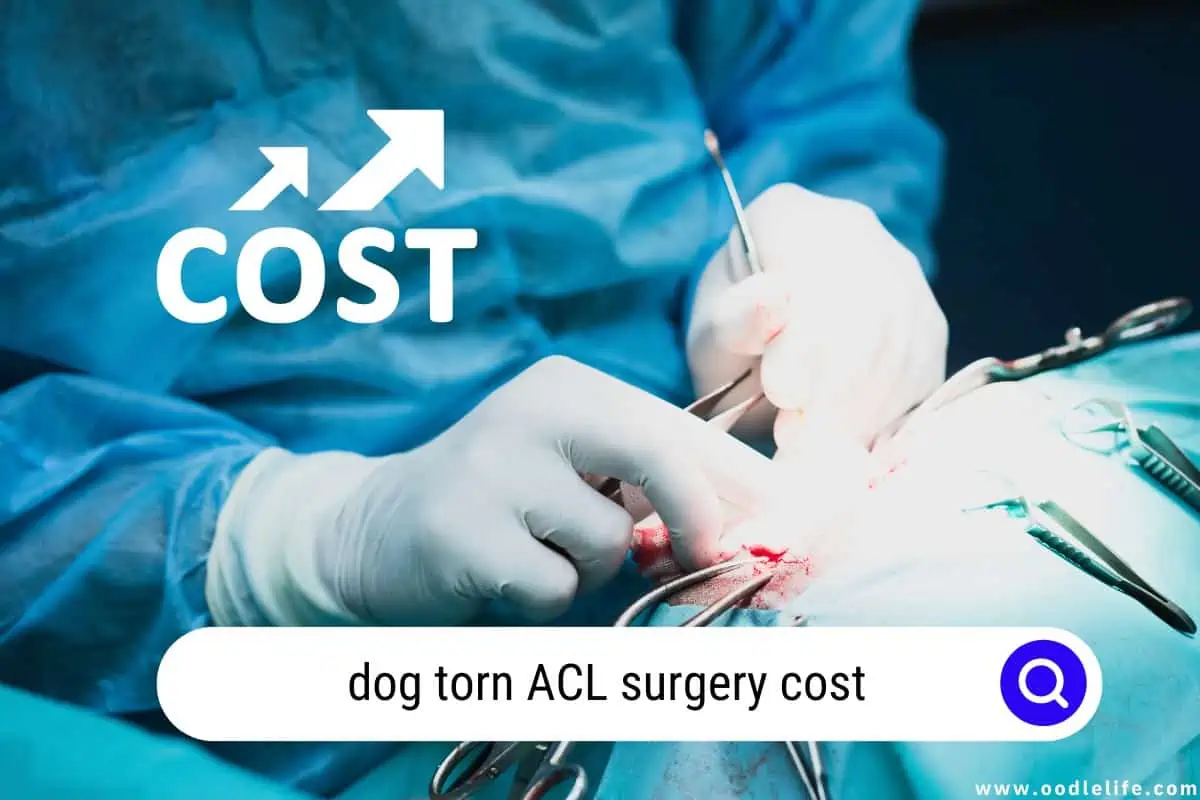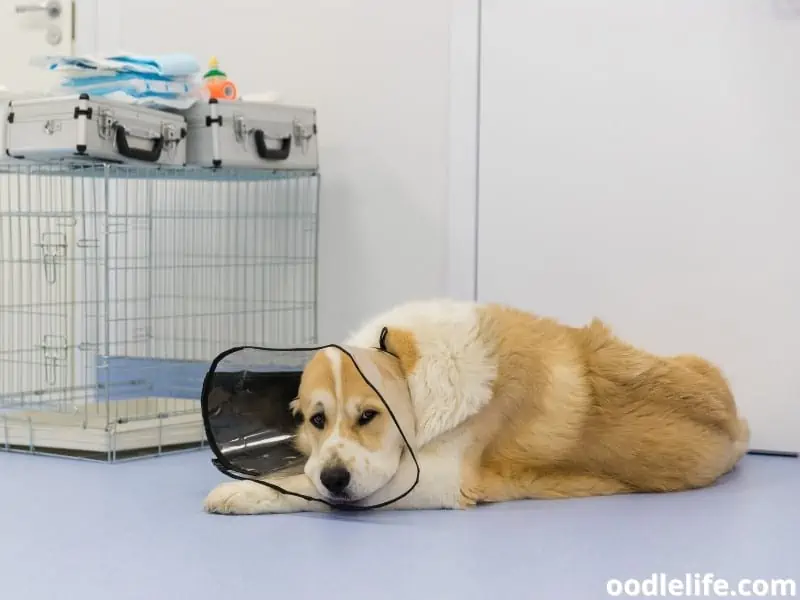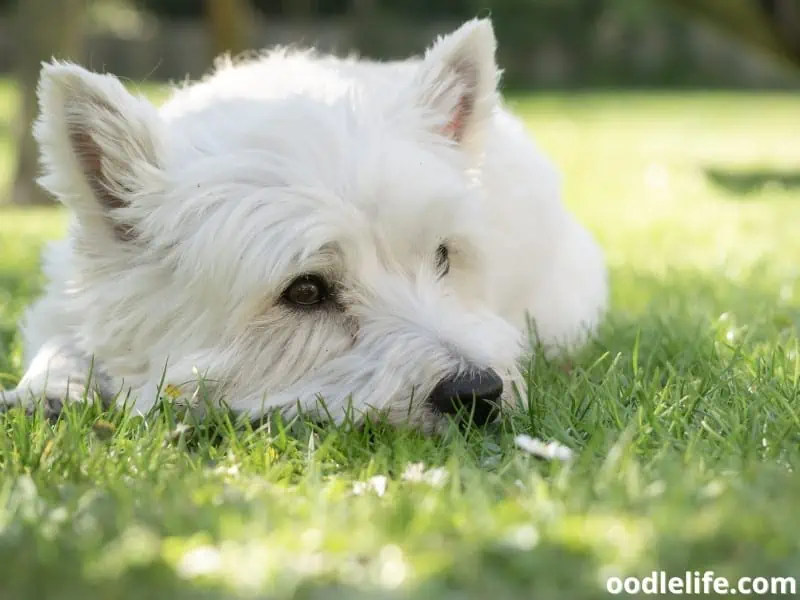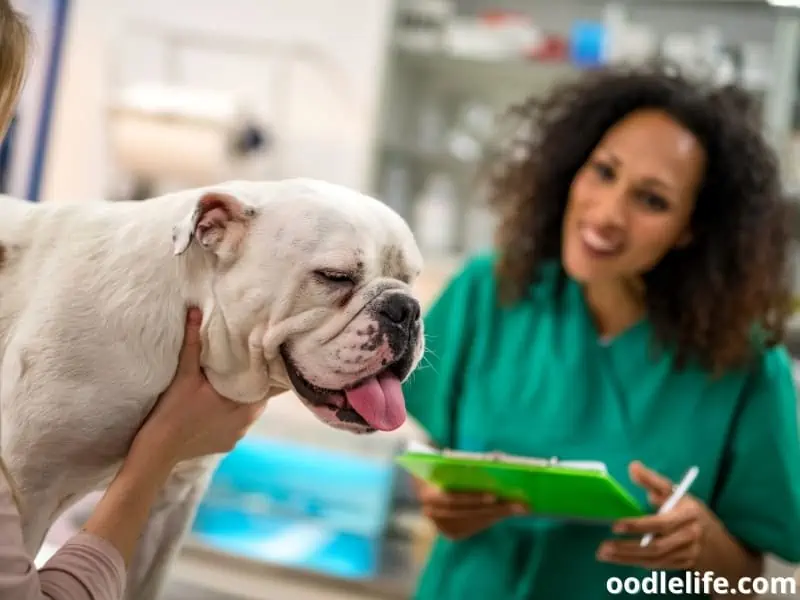Dog Torn ACL Surgery Cost (2024)
As a dog owner, you don’t need to be told just how precious your furbaby is. They are your loyal companion, your confidant, and your continuous source of unbridled joy! So when your pup starts to show signs of injury, it can be heartbreaking to see them in pain and unable to move around freely.
Of course, you want to provide the best possible care for your pooch. But surgeries can be expensive, and the cost may cause unwanted stress and concern. Luckily, that’s why we’ve put this handy guide together!

In this article, we’ll walk you through the costs associated with ACL injuries and take a closer look at the factors that can influence these costs. So, let’s dive in and get you the information you need to make an informed decision for your furry friend.
What Is Dog ACL Surgery?
ACL surgery for dogs actually refers to the repair of a dog’s Cranial Cruciate Ligament (CCL). Surgery may be necessary if your dog has a ruptured or torn CCL because this crucial ligament is what stabilizes the knee joint. When the Cranial Cruciate Ligament is injured, it can cause severe pain and lameness.

Obviously, this is a huge cause for concern!
The reason that most dog parents refer to the offending injury as a torn ACL is that it’s how we refer to the joint that holds our knees in place (the Anterior Cruciate Ligament). This is much like how you would refer to your dog’s front legs as ‘arms.’
The good news is that your veterinary provider will likely know what you’re referring to if you say you suspect your dog has an ACL injury. In fact, most vets may even use these two acronyms interchangeably as well!
It’s important to note that a torn CCL or injury to this knee joint refers to the front of the knee specifically. Somewhat confusingly, dogs have a different (yet similar-sounding) joint at the back of their knee. This is known as the Caudal Cruciate Ligament, and injuries in this area aren’t as common.
ACL injuries are usually a result of the natural degeneration of the knee joint or through continuous strain on the joint. Although these injuries may start as a torn ACL, they can worsen over time and lead to a rupture if they are left untreated.
How Much Does Dog ACL Surgery Cost?
An ACL or CCL surgery for your pup can be pretty pricey, so it’s a good idea to have a payment plan in place before you schedule a date.

Luckily, if you have pet insurance, chances are that they will cover most (if not all) dog ACL surgery costs. Typically, almost all pet insurance companies will cover at least some portion of an ACL surgery. Still, it’s best to check with your insurance provider to ensure you can afford any potential surgery or post-operative care costs.
The cost of CCL surgery can vary slightly, depending on a few key factors. These factors include:
- The size of your dog
- The extent of the injury
- Whether the ACL/CCL surgery is performed by a veterinary surgeon or general veterinary practitioner
- The type of surgery your dog needs
To keep things simple, we’ll explore the cost of ACL surgery for a dog by the type of surgery it is. Just remember that these costs are estimates and may fluctuate.
Tibial Plateau Leveling Osteotomy (TPLO surgery)
- Cost: $2,000 – $6,000
A tibial plateau leveling osteotomy (TPLO) is a surgical procedure that requires a veterinary surgeon to make an incision in the knee and cut through the tibia bone. The cut bone is then rotated, which changes the angle at which the femur (thigh bone) meets the tibia (shin bone). This effectively eliminates the need for a functioning cranial cruciate ligament.
Once the bone has been moved, a metal plate and screws are used to secure it in place. Then, the incision is closed and your pup will be as good as new!
Keep in mind that TPLO is considered a major surgery, which impacts the duration and ease of your dog’s recovery. Typically, your dog will need a longer recovery time and you will need to restrict its activity for several weeks post-op.
Although your pooch may be a little grumpier than usual following the procedure, TPLO is one of the most effective surgeries around. Plus, pouting is nothing a tasty treat can’t fix! After a little physical therapy and a few weeks of rest, you can be sure your dog will be chasing squirrels and digging up your yard just like it did before!
Lateral Suture Technique
- Cost: $750 – $2,000
Extracapsular Lateral Suture Stabilization (ELSS) surgery is better known as the lateral suture technique. This surgery involves placing a suture on the outside of the knee joint to stabilize the knee itself.
During ELSS surgery, the surgeon will make an incision in the dog’s knee and remove the damaged cranial cruciate ligament. It is then replaced with a synthetic ligament on the outside of the joint rather than inside, where the CCL is usually located.
ELSS is typically the preferred ACL surgery for smaller pups who are less active. It is minimally invasive (making it a great choice for older dogs) and much cheaper than its counterparts.
Still, it may not be suitable for heavier, larger, or more active dogs. So, if your dog is a little more spritely, be sure to chat with your veterinary surgeon to discuss other potential options.
Tibial Tuberosity Advancement (TTA)
- Cost: $3,000 – $6,000
Tibial tuberosity advancement is another of the most expensive CCL surgeries for your pooch. Much like TPLO surgery, the veterinary surgeon will need to make an incision in the knee and cut through the tibia or shin bone. Once the bone is rotated, a special cage-like implant is placed around the bone and secured with screws.
When the implant is in place, it should shift the tibial plateau forward and change the angle of the thigh bone. In turn, this bone will move to meet the tibia. This surgery is closely related to TPLO and can be just as effective.
The only difference is that it has a faster recovery time and a lower risk of complications.
TTA surgery can be incredibly complicated (hence the hefty price tag) and requires specialized equipment and training. Because of the challenges this surgery presents, it’s not always a viable option for your furry friend. Instead, the veterinary surgeon may suggest TPLO as an alternative solution.
TightRope Technique
- Cost: $1,000 – $2,000
The TightRope technique is extremely similar to ELSS surgery. Much like how TPLO and TTA surgeries are related, this technique mirrors many of the processes used in ELSS.
During TightRope surgery, a small incision is made in the dog’s knee to remove any damaged tissue around the knee joint. Once the torn cranial cruciate ligament tissue is removed, a small bone anchor is placed in the tibia bone.
Then, a high-strength synthetic material is passed through the anchor, and through a small hole that is drilled into the femur. This material is tightened to strengthen and stabilize the joint.
This minimally invasive procedure has a shorter recovery time than major surgeries to repair a torn CCL. Still, it is typically used for smaller dogs or those with less severe injuries. It isn’t usually recommended for larger or more active dogs, because the synthetic joint may loosen over time.
This can lead to additional surgeries and other complications.
FAQs
Is ACL surgery worth it for a dog?
ACL surgery can be worth it for a dog with a torn ACL. Ultimately, it can improve their mobility and overall quality of life. Without this surgery, your dog may experience chronic pain, develop arthritis, and have limited mobility.

Can a dog live comfortably with a torn ACL?
Although dogs can live with a torn ACL, it’s unlikely that they will be comfortable. Without prompt treatment, ACL injuries can lead to other health complications. These complications may be more expensive to treat in the long run, and will likely result in surgery further down the line.

So, rather than waiting to treat your pup, it may be best to pay for an ACL surgery as soon as you can.
What to do if you can’t afford ACL surgery for a dog?
If you can’t afford ACL surgery for your dog, there are other options to explore. Some veterinarians may offer pet parents a payment plan or financing option to help spread out the costs of the surgery over time. And, if your pup is insured, your pet insurance may be able to fund part of the surgery.

In some cases, they may even cover all of the costs involved!
In an emergency, it may be helpful to know that some non-profit organizations offer financial assistance to pet owners in need. But it’s important to speak with your local veterinarian and discuss treatment options to ensure your dog is getting the care it needs.